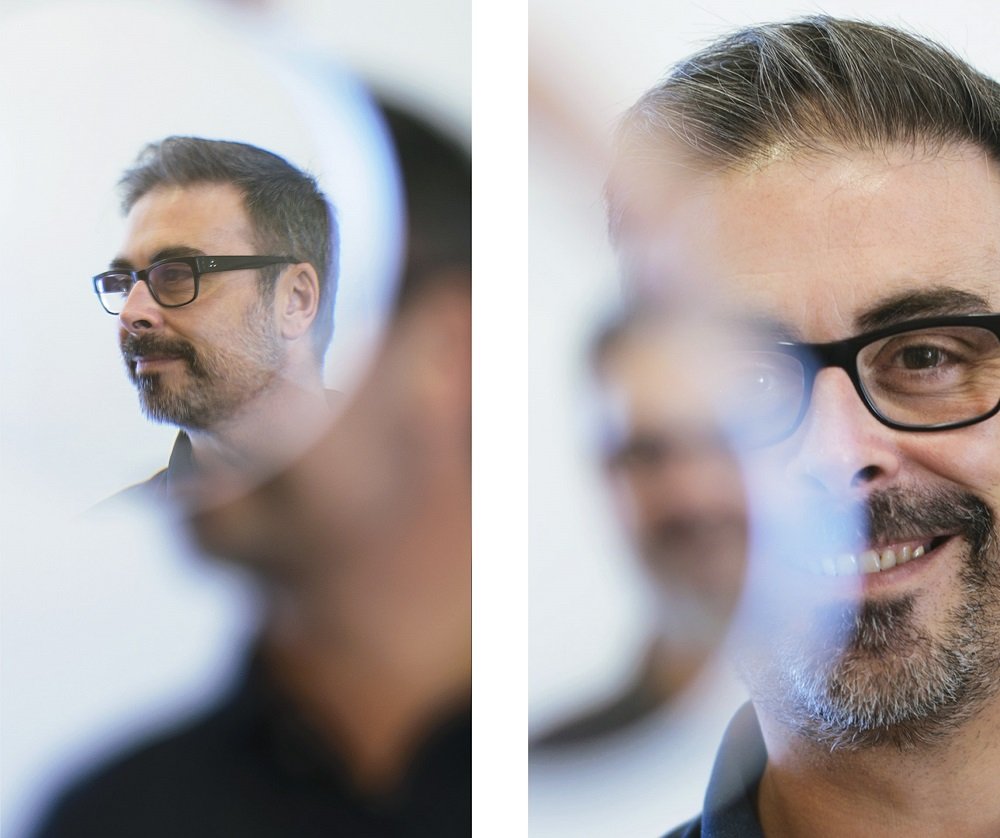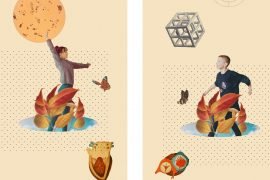What is the microbiome, in laymen’s terms?
The set of micro-organisms that live inside us. Each person is an ecosystem in which approximately half the cells are human and the other half, microbes. And we have a mutualistic relationship: we give them the nutrients they need to survive and they keep us healthy. It’s a sort of pact that makes us how we are and allows us to live like we do.
Are we really not one individual but a mass?
Microbes are everywhere in our body, but more than 95% of them are in our intestines. And, of that 95%, more than 90% is in the colon. Recent calculations indicate that we have one micro-organism for each human cell and that all the bacteria in our body together could weigh up to 800 grams. We’re truly surrounded by millions of them. There are more bacteria in our body that stars in the Milky Way! And most of them are beneficial to us. What’s more, they are often essential to life.
So, we have microbe genes in our DNA?
Exactly. We have the human genome, which is inside the eukaryote cells. And then we have the microbiome. What is known as the second genome. Although, in any case, it would be a metagenome: a sum of the bacterial genomes living in our body.
What are the effects of this encounter between genes and microbes?
Tonnes. One is that the bacteria interact with our cells and can sometimes change how they function. The other is that modifying the human genetic content is complicated but, in principle, this metagenome can be changed, for example, by eliminating some bacteria so that, in very simple terms, we can get rid of genes we don’t want. The microbiome not only shows us that the nature of human beings is much more complex than we imagined, but also reveals that there is a significant part of us that we can change.
Is each person’s microbiome unique?
There are some patterns we all share. The microbiome could be used to sum up the evolution of eukaryote beings with a phylogenetic tree of chimpanzees, gorillas, humans… You’d get the same tree using genes. But it is also true that the relative abundance of certain types of bacteria varies widely in different parts of the world: in Africa and people with diets rich in fibre, prevotella is predominant, while in regions that eat more meat and processed food there are more bacteroides. And you can take this down to an individual level. There are so many microbial genes that, using a huge number of markers, you could even identify a specific person. The microbiome is like a fingerprint.
And how do we get these microbes?
Most, at birth. Although it is true that there is much debate as to whether the placenta also contains microbes, if it does there would be very few, so the first big exposure occurs in the mother’s birth canal, where we come in contact with the microbes in the vaginal fluid, blood, faeces and, later, skin. There is then a massive colonisation of microbes that, when they arrive to the intestine, act as a powerful stimulus activating the intestinal immune cells. This initial stimulus is essential to our immune system’s development, making it both powerful and balanced. Throughout the rest of our lives, the bacteria in our intestines are constantly training this system. They keep it awake and also show it how to differentiate between its own cells, which don’t need to be attacked, and those that are pathogens, which must be kept in check.
What discoveries have come from studying the microbiome?
We’re still learning how it works and looking at the links between some of its functions and specific illnesses. We’ve only really been able to characterise bacteria precisely for 10 years. Right now, we’re trying to simplify everything with two goals. First, to develop a tool to see which patients could respond better or worse to specific drugs and which ones are more or less at risk of developing certain diseases. And, secondly, we want to interact with this microbiome to regulate it: curbing bacteria we don’t like as much and promoting those we do. It is a complex field that could begin to yield results in roughly 15 years.
What specific effects could this have on treating cancer?
One of the biggest revolutions in this field in recent years has been treatments that can modify the immune system, stimulating it to help detect cancer cells and eliminate them. And what we are seeing is that the presence of certain bacteria can make us respond better to this immunotherapy. At the same time, we are seeing that many times people who don’t respond as well to it have a different microbiome composition, or it has been weakened by taking massive amounts of antibiotics during treatment. Studies in rats have shown that, when we supplement the important bacteria, animals start to respond. So we have very promising signs. Now the challenge is to go from rodents to humans, and to do so specifically in order to ensure good response to immunotherapy.
Is it the same with AIDS?
At IrsiCaixa we’re interested in the microbiome because looking at our HIV patients, the ones with the greatest alteration in the microbiome are also those with the weakest immune system. What we want is first to help them strengthen this system so they will have fewer complications and second, to improve response to the vaccines we are developing to, one day, be able to cure AIDS.
And we can thank microbes!
In fact, we’ve also seen that there are changes in the microbiome associated with autoimmune diseases like multiple sclerosis. This could even be used to limit allergies. The goal is always a balanced microbiome. In truth, I think this is a very interesting time in medicine and that, to a certain extent, studying micro-organisms will have an impact on the medicine of the future.
Photo: Clara de Ramon
You can read more stories like this on ALMA, the social social media, a digital space devoted to the social field, which brings a new look at the present and the future of society, from an optimistic and diverse point of view, and from all the initiatives that “la Caixa” Foundation promote.





















